#kruidenier
Text
Remco Campert: boodschappen doen is leuk
bron beeld: vn.nl
U vergeet hem toch niet te lezen: Remco Campert (1929-2022)? De schrijver van de lichtvoetige waarnemingen. Met zijn milde kijk op de medemens is hij altijd goed voor een glimlach, op zijn minst. Zo als onderstaand voorbeeld aantoont. Een man komt de kruidenierswinkel binnen en vraagt om corn-chips. Wat zich ontspint is veelzeggend, herkenbaar en uiterst grappig.
Ik begreep die…
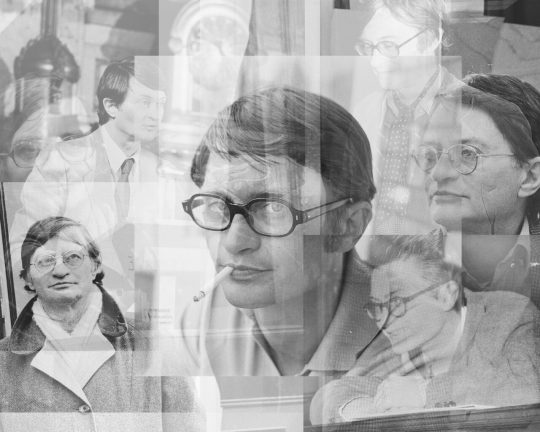
View On WordPress
#20-ste en 21-ste eeuws#corn-chips#Den Haag#glimlach#grappig#herkenbaar#korte verhaal#kruidenier#lichtvoetige waarneming#milde kijk#schrijver#veelzeggend
0 notes
Text
Panchaud, Kruideniers, and the concept of “Celebrity Criminal”
This is a re-worked analysis of two of the Patron-Minette’s minor affiliates that I originally intended to use in my @barricadescon presentation Theatres of Crime in Les Misérables: Analysing the Patron-Minette (which I’m very excited to be presenting later today at 6pm UTC / 7pm BST / 2pm EST if you have registered for the con!) but it unfortunately ended up on the cutting room floor since I ran out of time in my recording! I’ve split these two research tangents into separate short notes below the cut. The first note explores Panchaud as a fictional criminal celebrity in the novel, and the second speculates the possibility that Kruideniers, alias Bizarro, was loosely inspired by a real-life celebrity criminal.
•
Panchaud: A Fictional Celebrity Criminal
You'd easily be forgiven for forgetting who Panchaud is. Being an extremely minor character in Les Misérables, Panchaud, alias Bigrenaille, alias Printanier, is described as a prowler of the barrières and affiliate of the Patron-Minette who is involved in the Gorbeau ambush and later arrested.
While Babet, Gueulemer, and Brujon manage to escape La Force prison alongside Thénardier during the spring of 1832, Panchaud is not as successful. Rather, in a passing sentence in Tome 5, we learn that Panchaud— together with another affiliate of the Patron-Minette called Demi-Liard— is sentenced in 1833 to ten years of hard labour in the galleys for his crimes. Yet, amid these fleeting details about Panchaud, most of which are easily forgotten, we discover that he later achieves the status of a celebrity criminal!
This passing piece of information offers a fascinating glimpse into the way society sensationalises immoral criminals, and once more is an example of crime being presented as a theatrical spectacle within the novel. Although Panchaud may be initially regarded as a cowardly character— as evidenced by his open fear of Javert during the Gorbeau ambush where he is afraid to shoot him and instead is the first of the roguish gang to turn himself in (although it is worth noting that he is the only member of the Patron-Minette to possess a gun, adding a dramatic element to his character), Marius alerts us in an earlier chapter to the fact that Panchaud had already acquired a notorious reputation for himself as a dangerous street prowler in 1832:
Cependant, quelle que fût sa préoccupation douloureuse, il ne put s'empêcher de se dire que ce rôdeur de barrières à qui Jondrette parlait ressemblait à un certain Panchaud, dit Printanier, dit Bigrenaille, que Courfeyrac lui avait montré une fois et qui passait dans le quartier pour un promeneur nocturne assez dangereux.
[Yet, whatever his painful preoccupation, he could not help remarking to himself that the barrière prowler Jonderette was talking to looked very like a certain Panchaud, alias Printanier, alias Bigrenaille, whom Courfeyrac had once pointed out to him and who passed in the quartier for a pretty dangerous night rambler. (Rose trans.)]
This detail is particularly interesting since the fame and notoriety of other Patron-Minette characters is never demonstrated in such explicit terms as we get here, not even in the case of the gang's four figure-heads! Remarkably, it is the only instance in the entire novel where a member of the general public who is not affiliated with law enforcement— Courfeyrac in this case— demonstrates an awareness of the criminal individuals that make up the Patron-Minette (although, please note that Hugo repeatedly emphasises at other points that the Patron-Minette gang was indeed widely known within the society depicted in his narrative, even if this knowledge is never explicitly portrayed).
Following this revelation that Panchaud had already attained a certain level of fame in 1832, Hugo then further intrigues us with an additional fleeting comment about Panchaud's life after the events of Les Misérables:
This Panchaud, alias Printanier, alias Bigrenaille, later featured in several criminal proceedings and has since become a celebrity crook. At the time he was still only a notorious crook. Today he is a part of the tradition among gangsters and murderers. He had a real following toward the close of the last reign. And in the evening, at nightfall, at the hour when groups huddle together and speak in hushed voices, they used to talk about him in the exercise yard called the Lions' Den at La Force. At that fabled prison, at the exact spot under the covered way where the sewer runs that was used in the incredible breakout in broad daylight of thirty detainees in 1843, you could even read, above the flagstones over the toilers, his name, PANCHAUD, boldly carved by the man himself on the parapet wall in one of his attempts at escape. In 1832, the police already had him under surveillance, but he had not yet seriously made his début (Rose trans.)
And it is here where we get to witness Panchaud’s ascent to true celebrity status, even if it initially seems undeserved— for we never witness him performing any remarkable deeds within the narrative! In this passage he is reminiscent of Schinderhannes with his daring prison escape, although we are still left to wonder if he was actually successful in fleeing. The success or failure of his escape is inconsequential however, seeing as the core of Panchaud's status as a criminal celebrity lies within the theatrical narrative that has been constructed around him. surrounding them. We don't get to read or experience his daring feat first-hand; instead, we are presented with a dramatic retelling, as if we were reading a sensational Penny Dreadful about the character.
Panchaud's act of carving his name into the walls of La Force also draws parallels to Brujon's father, another (briefly mentioned) character who carved his name into these same walls in 1811. Much like how the name of Brujon's father being remembered by prisoners indicates his famed criminal reputation and legacy, Panchaud's name being remembered bestows a similar sense of notoriety and fame upon him. And, it is these stories that are told about him which appear to solidify his reputation in the 1840s.
All of the glimpses that we catch of Panchaud's actions and personality— the very qualities that make him a "celebrity"— are inherently theatrical. His status is granted by the sensation he generates, and we become engrossed in the constructed image of the dramatic tales surrounding Panchaud, rather than truly knowing who he is. Like the figure-heads of the Patron-Minette, he too assumes a role and creates a persona, and his fame is constructed upon the stage that is crime. Thus, his celebrity status is intricately tied to the concept of theatrical crime and sensationalised criminals as seen popularised throughout society in the nineteenth-century (and continues to be seen even today)!
•
Kruideniers: Inspired by a Real Criminal Celebrity?
Like Panchaud, Kruideniers is a minor affiliate of the Patron-Minette who is mentioned only briefly in the novel, appearing on two occasions: first, when Hugo initially lists the names of the gang's affiliates— and second, in a fleeting moment where we learn that Brujon managed to sneak a note out to Kruideniers from within La Force prison.
However, what makes Kruideniers intriguing to me— and what makes him particularly relevant to the ‘theatrical crime’ concept— is not his actions, but rather his alias: Bizarro. Through the use of this alternative and unique name, it appears that Kruideniers' alias may have been loosely inspired by a real-life celebrity criminal!
Francesco Moscato, also known as Vizzarru or Bizzarro, was a real-life Italian brigand, mass murderer, and seducer. After being enlisted in the army for seducing the unmarried daughter of the family he worked for as a servant, he formed a famous band of murderous brigands and hunted men with his dogs. While he may not be widely recognised now and is rarely discussed outside of Italian and some French texts… during the nineteenth-century he was certainly a figure of fame, as evidenced by the numerous statues and artworks depicting him and his gang:


Although the name ‘Vizzarru’ is not an exact match for ‘Bizarro’, the near-identical similarity between Moscato's and Kruideniers' aliases is notable. It is also worth mentioning that other authors of the time, such as Alexandre Dumas and Sir Walter Scott, had also been inspired to write stories about this real-life celebrity criminal in this period. In 1832, Walter Scott wrote a novella entitled "Bizarro" (although it was not published at the time), and Dumas later wrote about Bizzarro in numerous texts including "Cento anni di brigantaggio nelle province meridionali d'Italia" (1863). I mention these two authors specifically since they were well known to Victor Hugo, and although this cannot prove that Hugo would have known about the famous Vizzarru, it does at least partially strengthen the idea that he might have been aware of this real rogue.
If we consider Hugo's fleeting use of the name Bizarro as a subtle reference to a real-life celebrity criminal, we once again witness the blending of fiction and actual criminality in an inherently sensational, theatrical manner. It also offers another glimpse into how Hugo's fictional criminals were likely inspired in part by various famed and dramatic rogues of Europe.
#patron minette#patron-minette#les miserables#les mis#barricades 2023#barricades con#the brick#patron minette affiliates#les mis meta#panchaud#kruideniers#theatres of crime#historical context#meta
23 notes
·
View notes
Text
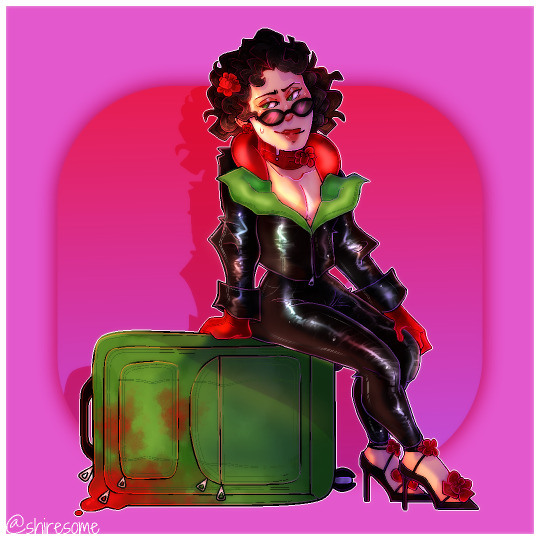


#les misérables#fanart#patron-minette#montparnasse#claquesous#kruideniers#les mis#les mis fanart#aaaaaaahg#shire art#art commissions#full-body#commissions#inspector javert#javert
9 notes
·
View notes
Text


The 1970s in the Netherlands was a decade of immense activity and experimentation in the field of housing: fostered by a state-funded program progressive quarters sprung up all over the country, new terms for conviviality were established and inhabitants were encouraged to shape their apartments and surroundings. An architect very engaged in the program and housing alike was Jan Sterenberg with his office based in Ter Apel, during this period one of the country's largest. His agenda was the connection of industrial building and quality of living, cost saving and flexibility, a problem area pressing since the 1920s. But despite his significance at the time Sterenberg somewhat fell into oblivion and only now, against the background of a Europe-wide housing crisis, receives a career-spanning study: Michiel Kruidenier's monograph "Groeikernen en Woonmilieus - Architect Jan Sterenberg en het Wonen in de Jaren 70", recently published by nai010 publishers, interweaves Sterenberg's work and the general currents of Dutch architecture, regional planning and housing in particular. As teacher at TH Delft his practice and research often intertwined and certainly stimulated experimentation and consolidated his reputation as a leading housing expert. As Kruidenier explains this quickly led to more and more commissions for housing developments and living quarters that in turn increased his involvement with prefabrication and building systems. The latter are comprehensively explained by the author and outline how Sterenberg continuously sought to improve the relationship between economy and quality. That these quarters are still thriving documents photographer Harry Cock whose five series capture their undeniably interesting layouts and unexpectedly calm atmosphere.
"Groeikernen en Woonmilieus" refocuses a historic but again topical contribution to innovative 1970s housing that through the author's extensive research and lucid writing receives its due appreciation. In view of a widespread housing shortage coinciding with often dull architectural solutions the book might serve as a source of inspiration for today's architects.
#jan sterenberg#dutch architecture#architecture book#architecture#netherlands#book#nai010 publishers
17 notes
·
View notes
Text

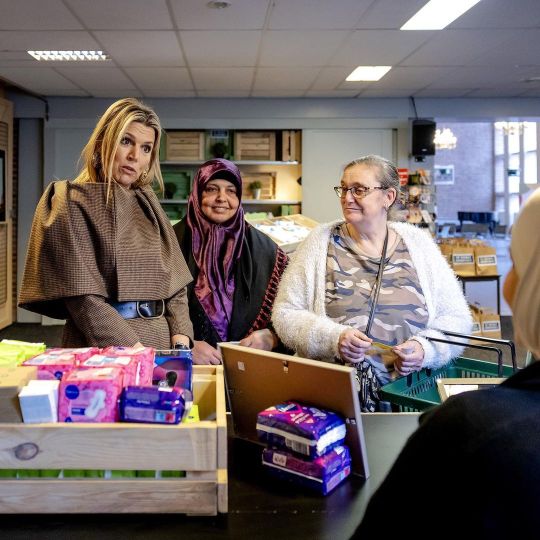

Her Majesty Queen Máxima paid a working visit to the Social Grocery Store in De Ark in Amsterdam this morning. De Sociale Kruidenier, an initiative of the Protestant Diaconie Amsterdam, is a supermarket and meeting place for Amsterdammers with a tight budget. Nov. 21, 2022.
📷 Vorsten
23 notes
·
View notes
Text
Os Segredos da Vizinhança #1
PRÓLOGO:
Negócios em Família
Eu vivo em um lugar chamado Rosa Cristal, um grande bairro periférico da enorme cidade de Santa Lourdes, conhecida atualmente pela sua forte cena cultural, além de suas diversas atrações turísticas. Por outro lado, o que realmente me atraí nesse lugar é um fenômeno que sempre acontece (arrisco dizer que desde sua fundação) o qual até hoje não consigo explicar direito: a absurda quantidade de figuras peculiares atraídas por essas ruas.
Para exemplificar melhor o que quero dizer, vou começar contando algumas coisas sobre um mercadinho na esquina da rua onde moro aqui em Rosa Cristal que se chama “De Kruidenier” (de cráidenír, pronunciam os funcionários, mas todo mundo da vizinhança chama de “DK”), um pequeno negócio que pertence a Baltasar Brum.
Há algumas décadas, quando ainda era um pouco mais magro e tinha um grosso bigode castanho em seu rosto, Baltasar abriu esse humilde comércio, buscando gerar um patrimônio digno para sua família. Desde então ele nunca empregou alguém de fora da família, trabalhando no começo do negócio apenas com seu filho Ari, que recentemente havia se casado com Carla (com quem namorou desde o colégio), e precisava de alguma renda fixa.
Anos depois do início do negócio, Ari e Carla tiveram dois filhos, Laura e Victor. Apesar de ter ajudado financeiramente, Ari nunca foi um pai muito presente e, com o passar dos anos, focou cada vez mais em seu trabalho e estudos apenas, deixando sua família de lado. Consequentemente, com toda a sobrecarga gerada em casa, Carla teve os planos para seu futuro frustrados. História comum, mas no mínimo trágica.
Muitos anos seguiram dessa forma, até o dia em que Carla sofreu um terrível e fatal acidente de carro enquanto viajava com sua irmã. Pouco depois de perder a esposa, ainda em período de luto, Ari recebeu a oportunidade de assumir um cargo de importância numa grande multinacional chamada LED e se mudou para fora da cidade, deixando seus jovens filhos sob a guarda e responsabilidade do avô Baltasar. Os dois sedentários abandonados, desde então passam o dia desperdiçando seus possíveis talentos jogando videogames e fumando baseado atrás de baseado no quarto onde moram, nos fundos do mercadinho, alternando entre si quem fica responsável pelo atendimento durante o horário de funcionamento.
Uma das partes mais interessantes na história deles aconteceu há três anos. Em uma madrugada de sábado, Laura e Victor faziam a faxina após o fechamento do estabelecimento quando foram rendidos por dois assaltantes que perceberam a porta destrancada nos fundos e invadiram a loja, armados com revólveres pequenos. Baltasar tinha, desde a abertura do mercadinho, o costume de nos fins de semana visitar a loja após seu fechamento, para poder pegar o dinheiro da semana e depositá-lo no banco. Para a surpresa dos assaltantes que agiram sem muito preparo, e também dos irmãos que naquele momento estavam totalmente chapados, Baltasar entrou, também pelos fundos, notou algumas coisas reviradas sobre as mesas e em seguida percebeu os assaltantes através do monitor das câmeras. Próximo à entrada dos fundos havia uma grande caixa de produtos defeituosos trocados e, sem pensar muito, Baltasar agarrou um grande rolo de massa feito de mármore que não tinha um de seus cabos e surpreendeu um dos assaltantes com um forte golpe em sua nuca, quebrando sua espinha e matando-o quase instantaneamente. Um golpe desonesto eu diria, e excessivo em diversos aspectos. O outro assaltante (que molhou suas calças observando completamente em choque seu companheiro caindo sem vida ao chão) tentou reagir com um tiro que acertou o braço esquerdo de Baltasar, o enfurecendo ainda mais, logo antes do velho acertá-lo com um pesado golpe no queixo, deslocando assim sua mandíbula e quebrando boa parte dos seus dentes, seguido de outro golpe que quebrou seu nariz e o deixou desacordado. Foi por pouco, mas esse sobreviveu.
Rapidamente Laura chamou as autoridades. Todos os depoimentos foram prestados enquanto o assaltante sobrevivente era levado para o hospital, onde com o impagável esforço de um grupo de jovens cirurgiões, o homem passou por diversas operações para ser salvo e ter seu rosto, desfigurado, reconstruído; As lesões, mais tarde, fizeram com que a família do assaltante processasse Baltasar e o estabelecimento, o que não adiantou, pois a justiça deu razão ao empresário justiceiro.
Na manhã seguinte ao ocorrido, o jornal da cidade noticiava, em letras que saltavam da folha, a manchete “EMPRESÁRIO LOCAL SALVA FUNCIONÁRIOS DURANTE ASSALTO”, de uma notícia contando sobre como “O conhecido empresário da vizinhança, Baltasar Brum, salvou seus funcionários (e também netos) de serem feridos por dois perigosos assaltantes fortemente armados, que forçaram sua entrada na loja”. Apesar de em diversos momentos a matéria deixar clara a popularidade de Baltasar entre os moradores da região, em momento algum dava detalhes sobre sua vida passada, ou o real motivo dessa fama; É possível que estivessem preocupados com a imagem de boa vizinhança que tentavam passar ao grande número de novos moradores, resultantes da recente expansão da cidade, ou, talvez só estivessem preocupados com a segurança do próprio Baltasar, que até onde sabíamos declarava estar satisfeito com sua “vida mais tranquila”; Mas a verdade, que foi escondida por todos os meios que noticiaram o ocorrido, é que aquela não era a primeira vez que Baltasar tinha matado alguém. Na realidade, ouso dizer que suas mãos haviam ceifado centenas antes daquele jovem infeliz.
Em sua juventude, ainda na casa dos vinte, Baltasar se apresentava formalmente apenas como BB, era protegido por algumas relações dentro da máfia holandesa de Santa Lourdes, que o populou como o responsável (de forma ilegal) pela segurança de todos os bairros ao norte da região, conhecidos hoje como os “Bairros Nobres” da cidade. Por muito tempo ele morou ali, em um humilde apartamento de um antigo prédio de tijolos, mantendo os crimes violentos afastados (a não ser os dele) e possibilitando o desenvolvimento do lugar. BB fazia o pior com os criminosos que incomodavam a população, chegando a executar, de uma só vez, cerca de vinte membros de uma gangue local, desarmados e trancados em um bar. Seus métodos violentos não eram segredo pra ninguém, mas, ainda assim, ele ganhava inúmeras “gentilezas” dos moradores e empresários locais, como forma de recompensa por suas ações “heróicas”.
Nessa época, Elza Cruz, a filha de um viciado que a usou como garantia em uma casa de jogos e acabou a perdendo, foi salva por BB, que matou os vencedores e os traficantes responsáveis pelo lugar. Rapidamente Elza tornou-se uma grande amiga e fiel “colega de trabalho” na vida criminosa do justiceiro. Após alguns meses vivendo um crescente (e pros românticos até poético) romance criminoso, casaram-se, e continuaram com suas atividades por quase mais dez anos, até Elza engravidar e ambos decidirem dar início a uma pacífica vida em família.
Pro azar dos dois, no mesmo ano, com uma recente mudança no governo, a cidade decidiu que não precisava mais de BB, que então foi levado à justiça. Ele confessou a maioria de seus crimes (mesmo que a sua autoria em vários casos nunca tenha sido escondida), e assumiu toda a responsabilidade, poupando seus companheiros para que Elza pudesse criar Ari sem preocupações; Devido ao ato, Baltasar foi perdoado pelos chefões do crime organizado, mas foi condenado pela justiça a quase três décadas de prisão, sendo libertado após nove por “bom comportamento” (E certamente um bom dinheiro nas contas certas). Nos anos seguintes à sua liberdade, ele decidiu tentar esconder que um dia carregou a antiquada imagem de BB, trabalhando por muito tempo entregando jornais e dirigindo um caminhão de frete até lavar dinheiro o bastante para abrir o mercadinho.
Mas afinal, todos devem estar querendo saber onde quero chegar contando tudo isso. Veja bem, nas ruas dessa cidade “pacata”, o passado de Baltasar é só uma entre as milhares de histórias curiosas que podemos encontrar em cada esquina. Nós compramos leite e ovos com um antigo justiceiro holandês, e na farmácia, por exemplo, somos atendidos pela filha mais nova de uma misteriosa senhora chamada Helga, que vive em uma mansão de madeira numa chácara ao leste da cidade, e apesar de mal ser lembrada hoje (a não ser pelas crianças que vandalizam seu lar semanalmente) um dia já foi a popular “Hellgrll”, uma das maiores, senão a maior stripper da antiga Santa Lourdes. Gosto de citar também que Hellgrll ficou conhecida no universo da vida noturna por mutilar os genitais dos homens que maltratassem suas garotas de qualquer forma, e fazia questão de deixá-los vivos depois do dolorido processo. Entende onde quero chegar? É claro que nem tudo que escutamos nas ruas é real, as pessoas têm a tendência de deixar os detalhes um pouco mais fantásticos do que realmente são, mas recomendo estar mais aberto a acreditar antes de prestar atenção no que ‘tô contando, a vida nesse lugar é mais impressionante do que qualquer mentira que eu poderia inventar a respeito. Porém, uma questão complicada é: por onde começar?
Para muitos dos moradores da cidade, eu e meu irmão somos apenas os caras que carregam o equipamento do DJ que mora com a gente (falamos dele mais tarde), mas na realidade, para os verdadeiros conhecedores, nós dois somos os maiores fornecedores de maconha da cidade, ou “traficantes” como dizem os radicais. E é assim que fico sabendo das histórias por trás de cada um: nós sempre tentamos criar certa intimidade com nossos clientes, pois assim como os irmãos Laura e Victor Brum nos contaram o que sabem de sua família, muitos outros clientes têm coisas interessantes para compartilhar; Mas tanto quanto saber de tudo isso acaba nos dando certo poder nas ruas desse lugar, saber demais também pode ser um problema, e é justamente sobre isso a situação que gostaria de compartilhar aqui. Uma história que envolve várias dessas pessoas interessantes, algumas de maneira mais direta e outras nem tanto, uma aventura (ou desventura, por melhor dizer) que chega a beirar o absurdo. Acredito que, por diversas razões legais, talvez eu não devesse falar sobre isso, mas certamente seria injusto guardar tudo para mim quando sei que há quem se interesse. Esse caso começou há dois anos, quando meu irmão e eu tínhamos acabado de perder uma de nossas principais plantações por problemas no sistema elétrico da estufa, que surgiu enquanto estávamos fora da cidade trabalhando com o DJ Praga, durante algumas semanas. Devido à perda, precisávamos vender com urgência o resto do nosso produto estocado pra tentar corrigir o problema.
Enquanto surtávamos em nossa casa, a alguns quilômetros de Santa Lourdes, três homens (que preferíamos não conhecer) decidiram parar em uma loja de conveniência deserta, na estrada que vem de Vista Azul. Todos removeram seus óculos escuros ao entrar no estabelecimento.
Um deles, de meia-idade, forte, porém magro, de pele branca manchada pelo sol, curtos cabelos castanhos penteados para trás e barba rala por fazer, agarrou uma cesta de compras e aproximou-se da geladeira de cervejas com um imenso sorriso em seu rosto, começando a analisar os preços. Enquanto o mais novo deles, jovem adulto, físico atlético, pele negra, cabelo preto black power médio e barba cheia, alcançou outra cesta e jogou dentro dela alguns pacotes de diferentes salgadinhos das prateleiras, antes de parar para calmamente escolher entre as diversas revistas empilhadas em um grande expositor de ferro. O terceiro, evidentemente mais velho do que os outros, um pouco fora de forma, pele branca levemente enrugada, careca e com barba preta cheia um pouco grisalha, aproximou-se do balcão em silêncio e bateu com o dedo no vidro do expositor de cigarros Orchis sobre o balcão, apontando para os maços de filtro branco, antes de sorrir amigavelmente para o atendente.
O atendente, um pouco desconfiado, analisou os três homens enquanto calmamente alcançava os cigarros no expositor.
– Quantos, senhor? – o atendente perguntou enquanto via o homem separar algumas notas baixas de um denso rolo de dinheiro que alcançou em seu bolso.
– Como? – o homem mais velho perguntou de volta.
– Quantos… – o atendente engasgou brevemente olhando para o dinheiro – O senhor quer quantos maços?
– Só um por favor, eu tô tentando parar. – o homem sorriu novamente.
O atendente então colocou o maço sobre o balcão e pegou um pirulito em um dos potes para tentar acalmar-se um pouco. O homem pegou o maço, olhou para os produtos nas cestas dos outros dois e soltou sobre o balcão o dinheiro separado, antes de guardar novamente o resto do bolo em seu bolso interno do paletó junto aos cigarros. Alcançou então um jornal enrolado no expositor, o colocou sobre o balcão e virou-se para assistir a televisão presa à parede enquanto esperava. O atendente calmamente alcançou sob o balcão alguns sacos de papel e os abriu entre os dois, jogando o jornal dentro de um dos sacos enquanto, de maneira disfarçada, pegava uma pequena pistola presa logo ao lado das sacolas e a escondia em sua cintura.
No momento em que os homens se aproximaram do balcão e o atendente preparou-se para começar a arrumar as compras (pronto para reagir em caso de assalto), a campainha da porta tocou, sinalizando a entrada de outro cliente e chamando a atenção de todos. Um homem adulto de ascendência latina, de olhos castanhos e cabelos pretos presos em um pequeno rabo de cavalo, chegou distraído falando ao celular, vestindo um uniforme de policial rodoviário.
Todos olharam em direção ao policial até ele parar bruscamente, percebendo a estranheza do local e finalmente se dando conta de todos a sua frente, reconhecendo quase imediatamente os três homens; Ele soltou seu celular e, enquanto movia a mão pra alcançar sua arma e tentar soltá-la da alça de segurança, os três homens soltaram tudo que seguravam (quebrando algumas cervejas e rompendo embalagens), rapidamente sacando suas pistolas automáticas e alvejando o homem com quase uma dezena de tiros, que o arremessaram violentamente para trás, sobre uma grande geladeira de sorvetes, também destruída pelos tiros.
O mais novo rapidamente destruiu o celular com uma forte pisada. Por alguns momentos todos observaram em silêncio a enorme e nojenta poça que se espalhava, resultante do sorvete que derretia em contato com o sangue do policial.
Ao se virarem para o atendente, ele apontava a arma para a cabeça do homem mais velho, suas mãos tremiam, e suor escorria de sua testa oleosa. O homem, instintivamente levantou as mãos enquanto os outros dois apontaram suas armas para o atendente que, mesmo tremendo, destravou imediatamente a arma.
– Ei! Ei! Calma! – o homem exclamou preocupado – Vocês ficaram malucos, caralho? Abaixa essas porras dessas armas agora!
Os dois, segurando firmemente suas armas, encararam sérios o atendente.
– Ei, garoto, não precisa se preocupar. – o homem mais velho disse ao atendente – Vamos conversar com calma, tudo bem?
O atendente continuou segurando a arma com o dedo firme no gatilho.
– Eu prometo que vou pagar pelos danos… – ainda de mãos levantadas ele calmamente voltou seu olhar ao corpo – E prometo que se você abaixar essa arma ninguém mais vai se ferir. – ele calmamente olhou para os dois atrás dele e com delicadeza sinalizou novamente para que abaixassem as armas – Não somos tão ruins quanto certamente parecemos ser nesse momento.
O atendente olhou para os outros dois homens que abaixavam os revólveres e calmamente começou a abaixar o seu. O homem mais velho lentamente levou suas mãos ao bolso do paletó, alcançou o bolo de dinheiro, puxou um generoso conjunto de notas altas e as soltou sobre o balcão. Quando o atendente guardou novamente a arma em sua cintura para pegar a grande quantidade de dinheiro, o mais velho apontou com o dedo para a câmera sobre a entrada.
– Onde ‘tão as imagens dessas câmeras? – perguntou.
O atendente, hesitante, olhou para eles com o dinheiro em suas mãos.
– Olha, nós não temos motivo algum para te matar, garoto, as pessoas como aquele cara ali no sorvete já sabem como é a nossa cara, nós só queremos evitar que saibam detalhes demais sobre o que aconteceu aqui, entende? Além disso se a polícia encontra essas imagens você sabe que não vai poder ficar com o dinheiro que te dei – vendo o atendente ainda em silêncio o homem pegou mais um punhado de notas altas e soltou sobre balcão. – Pronto, também posso pagar a mais pela câmera se te ajudar a decidir. – ele completou.
O atendente olhou para o restante do dinheiro no balcão, lentamente o pegou e guardou com o resto nos bolsos traseiros de sua calça, então abriu uma das portas de um pequeno armário ao seu lado e apontou para um computador ali dentro. Os três levantaram suas armas novamente e dispararam contra a máquina diversas vezes, destruindo-a diante do atendente assustado, que se jogou pra trás e encolheu-se contra as prateleiras. Ao terminarem, trocaram olhares em silêncio, satisfeitos com a destruição da máquina.
– Obrigado pela colaboração. – o homem concluiu sorrindo, jogando no balcão as poucas notas que haviam sobrado em sua mão e então guardando sua arma em um dos sacos de papel.
O mais jovem alcançou a cesta que havia soltado no chão e seguiu para fora da loja mesmo com os produtos danificados, ainda segurando a arma em sua mão direita. O de meia-idade, olhou com tristeza para as cervejas quebradas aos seus pés, guardou sua arma dentro da jaqueta e rapidamente correu até as geladeiras pra pegar outras duas caixas de cerveja antes de sair. O mais velho olhou seu jornal ao chão, molhando com a cerveja, sangue e sorvete derramados, pegou outra cópia e jogou na sacola com sua arma, puxou ele mesmo outros dois maços de cigarro de dentro do expositor atrás do balcão, e sorriu uma última vez para o atendente, jogando os maços dentro da mesma sacola, agarrando-a e rapidamente se dirigindo pra fora.
Os três homens entraram em seu carro, um Impala 94 completamente preto e com as janelas escuras, o mais velho como motorista, o mais jovem no banco do carona, e o de meia-idade atrás. Permaneceram em silêncio por um momento, que logo foi interrompido por um raivoso soco do mais velho contra o painel do carro, seguido de um grito animado e uma risada histérica do de meia-idade, que abriu uma cerveja e bateu várias vezes com os pés no chão do carro. O mais jovem, começou a sorrir discretamente, virando-se para a janela e observando, ainda com a arma em sua mão. Por fim o mais velho exclamou um “puta merda!”, soltou uma breve risada, e ligou o carro voltando para a estrada.
Aos poucos riam cada vez mais enquanto se distanciavam do posto.
6 notes
·
View notes
Text
@kleefkruid replied to your post “Ik kon vroeger snoepjes kopen voor 50 centiemen...”:
die zure visjes waren een halve frank bij de kruidenier op de hoek #neverforget
#90'skids 4 #centiemsnoepjes
1 note
·
View note
Text
De Groene Hilledijk met de Bas van der Heijden, 1 augustus 1977.
De benaming 'hille' komt in oorkonden betreffende Holland, Zeeland, Voorne en Putten in het bijzonder voor als door water omringde buitendijkse gronden. De benaming 'hille' komt behalve in de betekenis van hoogte en duin ook voor als eiland. Op 17 maart 1447 werden de hillen van Katendrecht door de heer van Gaesbeek en Putten aan Jacob Pot en zijn echtgenote in leen uitgegeven. Op 20 februari 1525 werden de uitergorzen, genaamd de Hille, aan de oostzijde van Charlois 'met alle slikken, aanwassen, visscherijen, vogelarijen, jaerschot, nat ende drooge dijcken enz.' door de uitgevers van Charlois verhuurd. Deze Hillepolder, waarvan de grondverkaveling op 23 augustus 1529 plaats vond, was 240 morgen groot en kreeg toen een sluis en een sluisvliet. De Brede Hilledijk beschermde de polder aan de Maaszijde, de Hilledijk aan de zijde van het Zwanegat, de Groene Hilledijk scheidde de Hillepolder van Karnemelksland.
Bas van der Heijden was de zoon van een kruidenier, die als eerste de zelfbediening introduceerde in zijn winkels. De keten BAS werd in 1973 door Dirk van den Broek overgenomen. Op dat moment had Bas van der Heijden 10 filialen, waarvan zes in Rotterdam en de andere vier in Sliedrecht, Papendrecht, Ridderkerk en Alblasserdam. In de jaren erna werden er 19 nieuwe filialen geopend. De filialen waren voornamelijk te vinden in de omgeving van Rotterdam, Dordrecht, Spijkenisse, Vlaardingen, Schiedam, Ridderkerk en Giessendam. Op 13 maart 2013 werd het dertigste filiaal geopend bij de Nieuwe Ommoordseweg in Rotterdam, waarmee de teller van de filialen in Rotterdam op tien kwam. In 2014 zijn de supermarktketens Bas van der Heijden, Digros en Dirk van den Broek omgedoopt tot Dirk.
De foto komt uit de collectie topografie Rotterdam en bevindt zich in het Stadsarchief Rotterdam. De informatie komt eveneens uit het Stadsarchief Rotterdam en van Wikipedia.
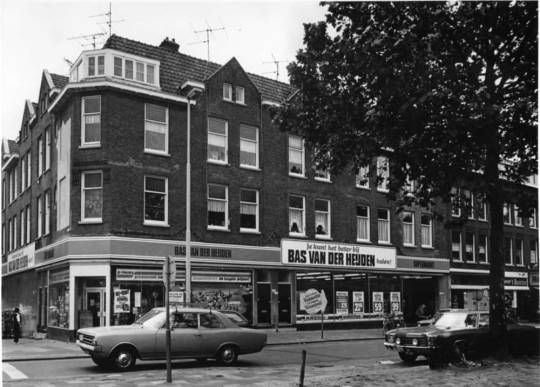
0 notes
Text
Kinderjaren - Jona Oberski
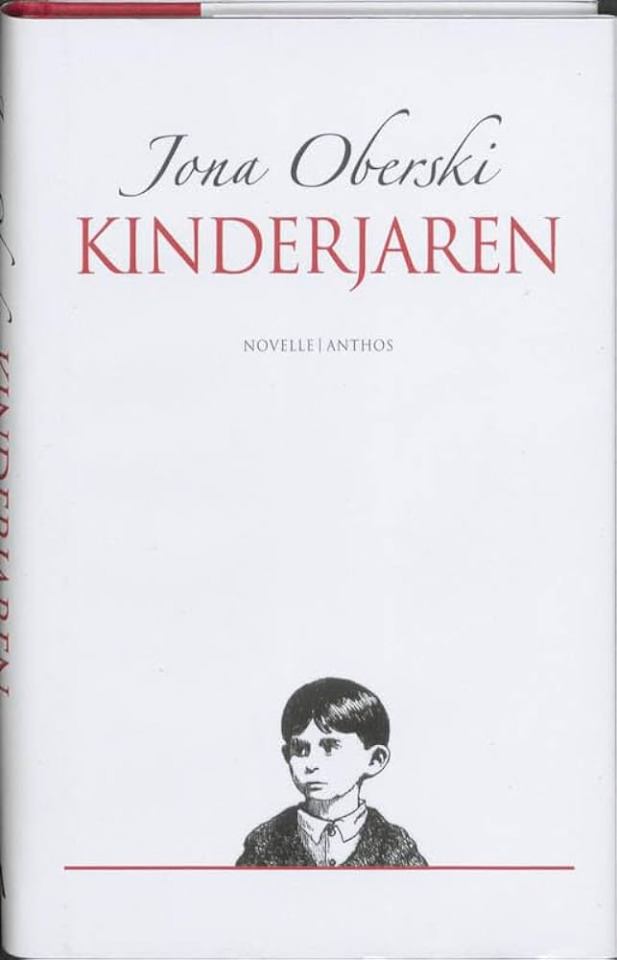
Korte Samenvatting
(Uit Scholieren.com)
Het boek gaat over een jongetje van Joodse afkomst. Met zijn vader en moeder woont hij in Amsterdam. Op een dag worden hij en z’n moeder per ongeluk naar Westerbork gestuurd. Na een week mogen ze weer naar huis. Kort daarop is hij jarig; hij krijgt erg veel cadeautjes, waaronder een harlekijntje. De invloed van de oorlog wordt steeds voelbaarder, met name de Jodenhaat wordt duidelijker. De kruidenier wil niets meer aan hen verkopen, maar de glazenwasser komt nog steeds. II
Hij moet nu een Jodenster dragen. Bij een inval door soldaten moeten ze hun huis uit. Ze moeten naar het Muiderpoortstation, waar ze op de trein gezet worden naar Westerbork. De ouders denken of willen denken dat ze naar Palestina gaan; ze hoeven alleen nog maar de papieren klaar te krijgen. Op een dag worden er mensen omgeroepen die weg mogen uit dit kamp. Zij horen daar ook bij. Helaas gaan ze niet naar Palestina, maar naar een ander kamp waar zijn vader gescheiden wordt van hem en zijn moeder. III
Hij mag in het nieuwe kamp af en toe mee om de keukenpannen schoon te maken, pas de tweede keer snapt hij dat hij ze leeg moet eten. Op vaders verjaardag zien ze vader eindelijk weer, moeder heeft een taart gemaakt van aardappelen en broodkruimels. Als zijn vader ziek wordt en naar de ziekenbarak moet bevalt hij dit wel, omdat hij zijn vader nu vaker ziet. Als hij van de dokter zijn moeder moet gaan halen omdat zijn vader niet lang meer heeft te leven verdwaald hij en vergeet de boodschap door te geven. Toch zijn ze er net op tijd bij om vader te zien sterven. Nu moet hij van de grote kinderen een proef afleggen om te bewijzen dat hij bij de groten hoort. Hij moet het ketelhuis binnengaan, hier blijken allemaal lijken te liggen. Als hij zijn moeder hierover vertelt, zegt zei dat dit het knekelhuis heet. Hij mag er nooit meer komen en wordt van top tot teen behandeld met ontsmettingsmiddel. IV
Moeder en hij vertrekken weer met een andere trein. Nog steeds wordt hem verteld dat ze op weg zijn naar Palestina. Hij heeft geslapen en zijn moeder vertelt hem dingen die hij zich niet kan herinneren. Zij zegt hem dat ze al twee weken in de trein zitten. Als de trein voor langere tijd stopt gaat hij met Trude, een vrouw die hij al kent van voor het kamp, brandnetels zoeken om soep van te koken. De volgende dag komen de Russen hen bevrijden, ze nemen de Moffen mee. De mensen uit de trein worden ondergebracht in verschillende huizen in Tröbitz. Zijn moeder is ziek en wordt naar het ziekenhuis gebracht. Hij slaapt bij Trude en Eva op een kamer. Hij bezoekt zijn moeder nog een keer in het ziekenhuis. Ze is er slecht aan toe, het lijkt of ze gek geworden is. Later zegt Trude dat de weg afgesloten is en hij niet naar zijn moeder kan, maar ze liegt want zijn moeder is dood. Eva vertelt hem dat zijn moeder dood is. Hierop wordt hij zo boos op Trude dat hij koorts krijgt en vijf dagen ziek op bed ligt. V
Met een Canadese vrachtwagen gaan ze terug naar Amsterdam. Meneer Paul en zijn vrouw willen hem wel adopteren. Eerst weigert hij te eten. Hij kotst ook alles uit, maar omdat hij nu een grote jongen is, hij is immers acht, moet hij het zelf opruimen.
0 notes
Text

Wederom een fantastisch menu in een klein dorpsrestaurant annex kruidenier! @ Le Petit Chastel in St. Bonnet-de-Castel
https://maps.app.goo.gl/9CST4fXM7acrJTyVA
0 notes
Note
I LOVE YOUR USERNAME!! Kruideniers my beloved!
aww thank you so much 😎🖤 an underrated classic imo lol
1 note
·
View note
Text
albert heijnstein is
kruidenier of groot denker
bestaat hij wel echt
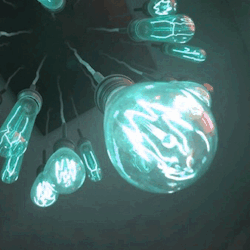
0 notes
Text
An exhaustive timeline of the Patron-Minette and their appearances in Les Misérables
Have you ever wanted to know the movements and actions of every single Patron-Minette character (including all affiliates?), throughout the narrative of Les Misérables and beyond? Well, this is the post for you!
This information is either collected from scenes that we as readers witness directly in Les Misérables, or pieced together (as best as I have been able to piece things together) from indirect snippets that Hugo gives us about these characters in passing. I haven’t listed the chapters where this information is located, but if you are curious feel free to message me and I can provide information!
P.S: There are many other wonderful Les Misérables timelines out there, which I urge you to check out! Please note that this timeline only contains information relating to the Patron-Minette, and that whilst Thénardier is featured multiple times in this timeline, he is not actually officially associated with the gang as an affiliate, but is rather a standalone crook that just happens to engage with the group in multiple scenes.
c.1793-1797;
Gueulemer likely born at some point in this period. In 1832 he is described as having ‘a mass of crow’s feet, though not yet forty years old’, and in 1815 he is working as a porter— so must have been an adult, or at least close to adulthood, in that year. Taken together, this information suggests that Gueulemer was probably born around within these years.
1811;
At La Force, Brujon’s father, who is also called Brujon, is locked up. He carves ‘BRUJON, 1811’ into the courtyard wall in the “Lion’s Den” at La Force.
[SPECULATIVE] Brujon is born. I suggest this only because of the line, ‘the Brujon or 1811 was the father of the Brujon of 1832’, which I feel implies Brujon must have been born around this time. Brujon is also described in 1832 as a ‘lad’, so must have been fairly young. If he was born in 1811, he would be 21 in 1832, which seems to align with the ‘lad’ description too.
c.1813-1814;
Montparnasse is born.
1815;
Gueulemer works as a porter in Avignon.
August 2nd
Gueulemer likely involved in the assassination of Marshal Brune.
Sometime before November, 1823;
Boulatruelle had been arrested and imprisoned for a crime we are not privy to, and likely was locked up on the Orion ship (since it is implied he recognised Valjean later in the novel).
He is released from prison and tries to find work in Montfermeil, but is unsuccessful. The only job he can get is for the administration, who hire him as a reduced-rate road mender. He is treated as an outcast by the people of Montfermeil.
1823;
‘Several days’ after November 16th
In Montfermeil, Boulatruelle continues his work as a road mender, but leaves his post early constantly to creep about in the forest. Thénardier, who still owned the inn at this time, gets Boulatruelle drunk in order to get him to reveal what he does in the forest. Boulatruelle reveals that he is trying to look for and dig up some treasure that he had seen an ex-convict whom he recognised (aka Valjean) hide in the woods. He is unsuccessful in finding this treasure.
Sometime before 1830;
Babet works a variety of jobs, including as a clown at Bobinos, and showing ‘freaks’ at fairs. During this time, he owns a booth with an advertisement that reads ‘Babet, dental artist, member of the academies, conducts physical experiments on metals and metalloids, extracts teeth, tackles stumps abandoned by his colleagues. Price: one tooth, one franc, fifty centimes; two teeth, two francs; three teeth, two francs, fifty. Take advantage of this opportunity.’
Babet gets married. He has children (it is not disclosed how many, but from the plural usage of ‘children’ rather than ‘a child’, we can assume he has more than one). The family travel together in his ‘booth-on-wheels’.
Babet’s wife and children disappear one day: ‘he had lost them the way you lose your hankie’. Soon after he decides to go and “tackle” Paris.
1830;
Patron-Minette begin ‘ruling’ the dregs of Paris.
Sometime between 1830-1832;
When out together one time, Courfeyrac points out Panchaud to Marius, seemingly aware of his reputation as a ‘dangerous night rambler’.
Montparnasse likely begins murdering people in this period as, by 1832, he already has ‘several corpses to his name’.
[SPECULATIVE] In this period Brujon had ‘done over’ a police station, out of sheer bravado. This information is revealed in a passing comment in the rue Plumet scene, which would mean that Brujon’s feat would have occured before June 1832, and, with Brujon being a fairly young ‘lad’, I am assuming that he would have only managed this feat in the last couple of years, after the Patron-Minette had begun to ‘rule’ the dregs of Paris.
1832;
We know that in 1832 the Patron-Minette has four heads, Babet, Gueulemer, Claquesous, and Montparnasse. We also know they have a vast network of associates - we learn 18 of their names; Panchaud*, Brujon*, Boulatruelle*, Laveuve, Homère Hugu, Mardisoir, Dépêche, Fauntleroy, Glorieux*, Barrecarrosse*, Lesplanade-du-Sud, Poussagrive, Carmagnolet, Kruideniers*, Mangedentelle, Les-pieds-en-l’air, and Demi-Liard*. [the affiliates who have an asterisk next to their name appear in the novel. The others sadly do not appear in any scenes].
February 2nd, evening
Brujon and Demi-Liard watch a melodrama at the Gaîté Theatre.
February 3rd, in the day
Thénardier converses with Panchaud near the rue de la Barrière-des-Gobelins, likely informing him of his plans for the Gorbeau ambush that evening. Marius sees them (and recognises Panchaud).
Later in the day, Brujon and Demi-Liard meet on the rue du Petit-Banquier, and Brujon convinces Demi-Liard to partake in the Gorbeau ambush that evening.
February 3rd, 6pm; the Gorbeau ambush
Babet, Claquesous and Gueulemer are present at the ambush.
Panchaud, Demi-Liard, Brujon, and Boulatruelle are present at the ambush.
Montparnasse is not present at the ambush. He shows up but stops on the boulevard outside the building to talk to Éponine, before they go off and ‘play Némorin’ together instead of help out on the job.
When Javert interrupts the ambush, all of the Patron-Minette characters present are arrested and taken to La Force. Azelma, Mme Thénardier, and Thénardier are also arrested. Thénardier is also sent to La Force along with the Patron-Minette, Mme Thénardier is sent to Saint Lazare, Azelma is sent to Les Madelonettes.
Night of February 3rd / morning of February 4th
Claquesous is ‘lost’ and manages to escape from the police’s clutches whilst being transported to La Force. He is free.
Éponine is found and ‘nabbed’, being sent to Les Madelonettes alongside her sister.
The Patron-Minette characters are all put into solitary at La Force.
Mid-February
Brujon released from solitary confinement and into Charlemagne yard, with the police hoping that he might reveal something whilst chatting. He spends his days in the yard staring at the canteen’s price list and complaining of being ill, shivering and trying to get sent to the infirmary. Secretly, he is plotting an escape.
The other arrested Patron-Minette characters remain in solitary.
‘Towards the end of February’
All captured Patron-Minette members remain in prison.
Brujon sends out notes to three previously unmentioned Patron-Minette associates, Kruideniers, Glorieux, and Barrecarosse [confirmed by the line ‘these men were somehow affiliated with the Patron-Minette gang], who patrol the areas of the Panthéon, the Val-de-Grâce’ and the barrière de la Grenelle respectively. These men are arrested by the police, who suspect that Brujon is planning a scheme from prison.
Brujon writes his note to Babet, informing him of rue Plumet. He is caught and sent to solitary for a month, but the note still gets to Babet.
Babet, using his mistress (locked up at La Salpêtrière) is able to transfer this note to Magnon, who delivers the note to Éponine as soon as she is released from Les Madelonettes.
Azelma and Éponine released from Les Madelonettes.
‘A few days later’; c. end of February / early March 1832
Éponine delivers a biscuit, meaning that there is nothing worth doing at rue Plumet, to Magnon, who transfers it to Babet’s mistress, who transfers it back to Babet.
‘Less than a week after that’; c. early March 1832
Babet and Brujon bump into each other, as one heads into the ‘preliminary’ and the other returns from it. Babet informs Brujon that there is nothing worthwhile at rue Plumet and the scheme is aborted.
March
Brujon is still spending his time in the correctional chamber, after being caught writing his note, and distributing notes outside of prison. Whilst there, he plans his escape, and makes a rope.
After being released from the correctional chamber, he is transported to the New Building. Here he finds Gueulemer and a nail.
One evening in early April
Beyond the Salpêtrière - in the Austerlitz area, Montparnasse follows Valjean with a rose in his mouth. He tries to attack the old man but is overpowered, and instead treated to a long lecture. Valjean hands Montparnasse his purse. Gavroche, who witnessed the whole thing whilst hiding in some shrubbery, then steals it from Montparnasse’s pocket and leaves it for Mabeuf.
The following day
Babet escapes prison in the morning, as he was being transported from La Force to La Conciergerie.
Gavroche bumps into Montparnasse at the corner of rue des Ballets, near La Force. Montparnasse tells Gavroche that he is off to find Babet and informs him that Babet has escaped (it is not clear how Montparnasse found out this information, or if he had seen Babet earlier that day, but regardless he still is aware of what happened). Montparnasse puts two quill pieces wrapped in cotton up his nose, disguising himself and making his voice sound different. He also carries his cane that contains a concealed knife within.
In the early hours of the next morning, ‘towards one o’clock’
Babet and Montparnasse meet up and prowl around La Force, waiting on Gueulemer and Brujon to escape. It is a windy, rainy night.
Brujon and Gueulemer get up in the middle of the night and start using the nail that Brujon had found before to break the chimney which their beds stood against. They scale the chimney, force the iron grating apart, and end up on the roof. They secure the rope that Brujon made to the iron railing and descent down the eighty foot drop down to the bathhouse, and exit onto the street, and regroup with Babet and Montparnasse. Brujon pulls the rope down, some of it tears and is left on the roof. This escape only takes 45 minutes.
Thénardier sees Brujon and Gueulemer escape on the roof from his cell.
One hour later, at around two o’clock
Thénardier drugs the conscript watching his cell with stupefying wine and steals his bayonet. He makes his way up to the roof (no further detail about how he made it onto the roof is given)
The remnants of Brujon’s rope left on the rood are far too short for Thénardier to use to escape. He is stranded there until 4am.
Two hours later, at four o’clock
The police are alerted of Thénardier’s escape. Babet, Montparnasse, Gueulemer, and Brujon congregate beneath the roof that Thénardier has been stuck above for the last couple of hours, arguing about whether they should leave him, or wait a little longer. They spot him once he throws down the remainder of the rope left on the roof at their feet. Montparnasse tells Brujon to tie the rope together again and throw it up, that way Thénardier can climb down. However, Thénardier is too cold to move. They determine they need a ‘nipper’. Montparnasse runs towards the Bastille.
‘Seven or eight minutes later’
Montparnasse returns with Gavroche, who helps Thénardier escape. Gavroche recognises him as his father, but Thénardier does not recognise Gavroche as his son, not even when Babet pulls him aside and informs him that the boy who saved him was his son.
June 3rd, in the morning
Brujon sees some sparrows fighting.
June 3rd, in the evening
Brujon encounters a woman arguing.
June 3rd, 1 hour after nightfall; rue Plumet attack
Babet, Gueulemer, Claquesous, Brujon, Montparnasse, (and Thénardier) show up to rue Plumet, carrying an array of various horrible weapons. Gueulemer is specified to be carrying a pair of fanchons. They encounter Éponine, who had not seen her father in four months.
Montparnasse and Éponine exchange awkwardly flirtatious dialogue, and she does not address him as Monsieur. She grabs his hand and he warns her that she’ll cut herself on his knife.
After failing to convince them that rue Plumet is a biscuit, Éponine leans against the gate and threatens to scream, before making her powerful (and devastatingly tragic) speech.
Babet reasons that there is something the matter with Éponine, and remains keen on doing the job. Montparnasse threatens her with a knife. Brujon however, who is described as a bit of an ‘oracle’, reveals that he is against entering the house now. He is superstitious, and recollects the fighting birds and woman he saw earlier in the day as a sign that the job was bad.
The gang resolves to clear out. As they leave, Montparnasse declares that he would have slit Éponine’s throat, if they would have wanted him to. Babet responds with ‘not me, I don’t touch women’.
June 5th, at night, but before ten o’clock
Le Cabuc**, a mysterious stranger, is at the barricades and drinking. He decides to try and get into one of the large houses along rue Saint-Denis, banging at the door. When he is denied entry, he shoots the porter. He is executed by Enjolras, and his body tossed into rue Mondétour.
**Early June, a short while after the barricades fell
In the morgue, Le Cabuc’s body is searched and a police agent’s card is found on his person. Victor Hugo (practically) confirms that Le Cabuc was Claquesous.
A special report on this subject is written for the Prefect of Police. Hugo claims that in 1848 he held this exact report.
‘Some little time’ after June 7th
Boulatruelle is released from prison, as there is not enough evidence to charge him for the Gorbeau ambush, since he was so drunk. He goes back to the road between Gagny and Lagny, where he used to work as a road mender before. His alcoholism becomes worse.
Soon after; ‘one morning, shortly before daybreak’
Boulatruelle spots a man walking in Montfermeil’s forests. He tries to follow him, but keeps losing sight. He eventually stumbles upon the location of the treasure he had so long dreamed of finding. But, the hole had been dug up, and it was empty.
c.1833;
Panchaud and Demi-Liard are sentenced to ten years in the galleys for their crimes during the Gorbeau ambush.
1835;
Patron-Minette stop ‘ruling’ the dregs of Paris. It is not clear whether that means the group disbanded or if they had simply become too weak and slipped from their position of power.
1843;
Panchaud makes a famous prison escape at La Force [unclear if the escape is successful]. We are informed that this escape happened in broad daylight, and involved thirty prisoners.
As Panchaud makes his escape, he writes his name above the culvert at the entrance to the sewer.
c.1848;
Panchaud has become a ‘celebrity crook’, and is spoken of as a legend by prisoners in La Force. (Hugo writes in 1862 that ‘he had a real following towards the close of the last reign’, which I believe is making reference to the reign of Louis Philippe - as the Second Republic did not have a king, but rather Presidents... but, I could most certainly be wrong!)
#patron minette#patron-minette#patron minette affiliates#babet#gueulemer#claquesous#montparnasse#brujon#panchaud#demi-liard#boulatruelle#glorieux#barrecarosse#kruideniers#les miserables#les mis#meta#timeline
40 notes
·
View notes
Text
2688 Alle beelden zullen verdwijnen
2688 Alle beelden zullen verdwijnen
We hadden een Opel Olympia, waarmee mijn vader als vertegenwoordiger in wijnen en limonades langs de slijterijen en de kruideniers ging. Zelfbedieningswinkels waren net en supermarkten nog maar amper in opkomst. De Spar was een goede klant van hem. Kopen bij de Spar is sparen bij de koop. Soms mocht ik een dagje met hem mee, tussen de Reine Claude en de Boerenjongens, met de plastic…

View On WordPress
0 notes
Text
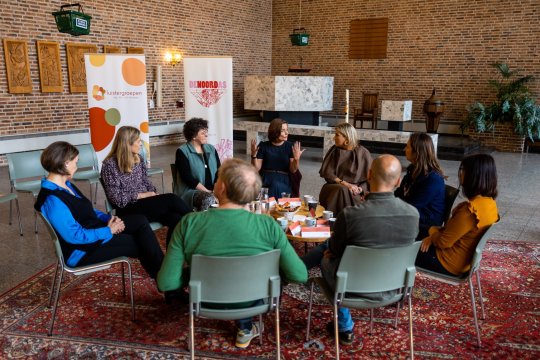



Her Majesty Queen Máxima paid a working visit to the Social Grocery Store in De Ark in Amsterdam this morning. De Sociale Kruidenier, an initiative of the Protestant Diaconie Amsterdam, is a supermarket and meeting place for Amsterdammers with a tight budget. Nov. 21, 2022.
📷 Royal House of The Netherlands
16 notes
·
View notes